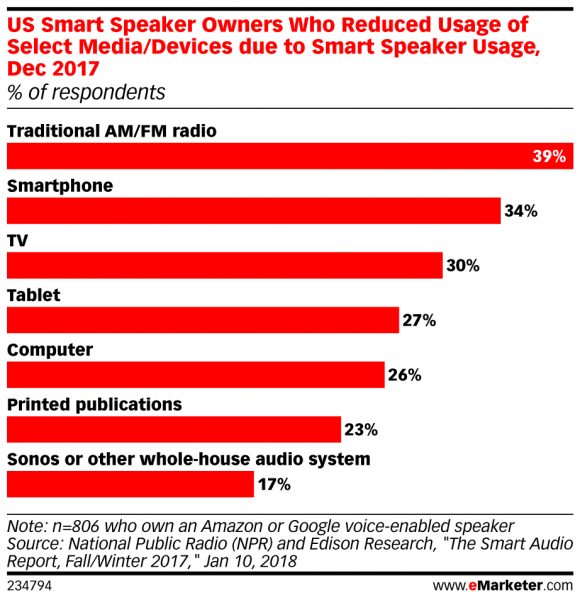Delivering seamless, consistent, and engaging experiences starts with a customer-centered digital strategy. This ongoing series explores the characteristics that make up a great digital strategy and how to deliver powerful brand moments that solidify customer loyalty and drive differentiation for your organization.
Technology is infused in every part of our lives and is only becoming more ubiquitous, moving beyond the constraints of screens and into our environments. New capabilities embedded into the physical world around us remove friction from our tasks, making our lives easier in ways we might not even notice. These capabilities are also changing customer expectations for the experiences brands provide, which is why we consider awareness and understanding of Zero UI to be essential for brands’ digital and customer experience strategies.
What is Zero UI?
Named for its lack of a traditional user interface, Zero UI experiences rely on ambient technology embedded within an environment. This allows users to interact naturally with the technology without the need for training or a special skill set. According to Andy Goodman, who coined the term,
“Zero UI is an idea that living services are going to trigger a change in the way we interact with devices and services. [They take] us away from the screen to a more natural way of interacting with things. Our body movements, our gestures, our words, maybe even our thoughts, will all be able to trigger the kind of results we want from a device, rather than having to … take your attention away from what’s around you and become absorbed in the screen.”
The goals of Zero UI, as described by Sean Beaubien, are to:
- Eliminate as much as possible from the user’s view so they can get on with their lives
- Reduce time spent on computers while still achieving the same outcomes
- Have machines understand users in their own natural words, behaviors, and gestures
Basically, Zero UI is technology within our environment that reacts to us and makes our lives easier while bypassing traditional input devices such as touchscreens, keyboards, and mice.
Voice: A growing trend
One of the most ubiquitous examples of non-traditional user interfaces are those powered by voice recognition technology. Examples include the smart speakers popping up in homes around the world and voice assistants like Siri, Alexa and Cortana that are built into smart devices.
eMarketer estimates that 111.8 million people, more than 33% of the total population, will use a voice assistant at least monthly in 2019, up 9.5% compared to 2018 usage. Consumers are getting used to the convenience of these devices and assistants, which make interacting with technology and accomplishing tasks easy while driving, when your hands are full or dirty, or when your smartphone is out of reach.
Companies can join in the growing sphere of voice by making resources available to their customers through voice assistants. Indiana Michigan Power (I&M), for example, has made it easy for customers to manage their energy usage by making account information accessible through Amazon’s Alexa and Google Assistant. Once they connect their I&M account to their voice assistant, the customer can simply begin a question with “Ask Indiana Michigan Power” to learn about his/her energy usage, check his/her account balance, receive tips on saving energy, and accomplish other tasks, all without using a screen.
Voice recognition technology is not without limitations. For example, a voice assistant may not work well for users with impaired hearing and/or speech, or for users with accents not accounted for in its programming. Voice technology also runs into problems when sensitive information (such as passwords, account balances, and medical information) should not be stated out loud to everyone within hearing range. Despite these limitations, more than 33% percent of the US population are making regular use of voice assistants. Companies cannot afford to ignore voice in their customer experience strategies.
Computer Vision: Powering a new level of frictionless shopping
Another technology driving Zero UI experiences is computer vision, which enables computers to see, identify, and process visual information the same way that human vision does, and then provide appropriate output.
Computer vision is one of the driving forces behind Amazon Go stores. Customers can walk into any of the 15 Amazon Go locations (now in New York City, Chicago, San Francisco, and Seattle), pick up the meal, snack, and grocery items they want, and walk out – no waiting in line and no checkout process.
A customer scans the QR code in her Amazon Go mobile app at the store entrance. Beyond that, no other direct device interaction is required. Instead, the smart store uses computer vision, artificial intelligence, and sensor technology to track the items the customer removes from the shelves. If a customer changes their mind and puts an item back, the technology embedded in the environment recognizes that, too. Once the customer leaves the store, their purchases are tallied and charged to their Amazon accounts.
Scaling these high-tech shopping experiences still remains a challenge, but as developments in computer vision and sensor technology continue, we’ll likely see an increase in the footprint and impact of these frictionless brick and mortar experiences.
Want to see another example of computer vision in action? Check out this recent project by Perficient Digital Labs! In this product customization experience, computer vision is used to identify which colors the user selects.
Voice recognition and computer vision are only two of the many technologies companies can use to create Zero UI experiences. Others include:
- Thermal sensing, which enables smart thermostats and smart vents to manage temperature throughout a home or office without human intervention.
- Geolocation, which allows technology to understand the user’s position in real-time. Examples include geofencing and beacon technology.
- Spatial Awareness, which allows systems to maneuver through an environment and around obstacles. The robots now roaming around my local grocery store are great examples of spatial awareness.
Why is Zero UI essential to your digital strategy?
Among the key emerging trends around customer experience, we’ve observed that the more a brand can incorporate itself into the customer’s lifestyle, the better the experience will be. If your products or services are ingrained in your customers’ daily tasks and activities, you have more opportunities to improve their lives and gain their loyalty than if you are viewed as a commodity or one-time purchase.
Zero UI experiences take that a step further by lifting the burden of certain tasks from customers, making their lives easier and often saving them time and money. Google, for example, uses the tagline “Welcome to the helpful home” to market its smart home devices, including Nest products, positioning itself as customers’ partner in managing their households.
Customers notice when you provide an easy and pleasant experience. Identify ways to improve your CX through Zero UI technology, whether its integrating your existing virtual agent with voice assistant technology (as I&M did) or using sensor technology to better understand and improve your in-store experience.
Another reason to keep Zero UI, particularly voice technology, on your radar is that it’s changing the way customers consume content and, therefore, marketing. As eMarketer revealed, the rise in smart speaker usage is cutting into other channels’ traffic.

Source: eMarketer
Designing for Zero UI
The name “Zero UI” is actually a bit misleading. In reality, technologies like voice assistants, smart thermostats, and sensor-laden smart shelves do have user interfaces. The key difference is that the user does not interact directly with those interfaces as they would with a device-based experience like a website or mobile app. Because of this, the user will not have the same insight to the range of paths or options available through the technology.
When a user uses a search engine on their phone or computer, they receive an extensive list of results from which to review and choose. When that same search is conducted verbally using a smart speaker, the user will only receive one result (which may or may not be what they are looking for).
Andy Goodman explains, “As we move away from screens, a lot of our interfaces will have to become more automatic, anticipatory, and predictive.”
When designing experiences powered by Zero UI technology, you can’t lay out all the options for the user to see at once. There will also likely be multiple variations of the customer journey to take into account, rather than a single linear, sequential path. To make the experience pleasant and effective, you have to create a system that will understand the user behavior (which could be conveyed in many different ways), recognize intent, and respond accordingly. Combining Artificial intelligence (AI) with continuous customer research, testing, and iterative improvements will help you bridge the gap between the users’ needs and what your experience can accomplish.
If you decide to implement Zero UI technology, it needs to be built into your long-term customer experience strategy. Brands that treat these technologies as the latest fad or gimmick to try out and discard will not be successful. You have to develop experiences that make sense for your customers and improve their lives so you can sustain and build upon them going forward.
Considerations to keep in mind
I’ve already talked about some of the limitations of voice technology, such as it’s ineffectiveness for users with impaired hearing or speech. Regardless of the technology you choose to implement, you need to be aware of any constraints and consider every segment of your audience.
You also need to respect users’ privacy and avoid intruding too much in the customer’s environment. According to a recent Microsoft report, “41% of voice assistant users have concerns about trust, privacy, and passive listening.” Facebook has also recently faced scrutiny and legal action for its use of facial recognition software. These examples show that while many customers are open to streamlined experiences, transparency and data security are important factors brands will need to include in any Zero UI efforts.
The Key Takeaway
Zero UI technologies can be powerful tools for improving your customer experience, but don’t try to incorporate Zero UI just to do it. Look for opportunities where one of these technologies can really enhance your customers’ experience and make their lives easier. These improvements may be a major endeavor like Amazon Go stores or just one small piece of your product or solution. Whatever you decide to do, keep your customer in focus, be transparent, and continually work to improve the experience.
Creating stand-out digital customer experiences that attract, engage, and retain customers is a tall order. Perhaps you’ve already done some of the foundational work, and you need help with the next step.
When working with clients, we help make sure you know your customers and understand their journeys. Through design-thinking tools, industry research, and pragmatic ideation to execute from end-to-end, you will have what it takes to deliver experiences that surprise and delight your customers.
Ready to get started with your digital strategy? Dive in for more resources.

